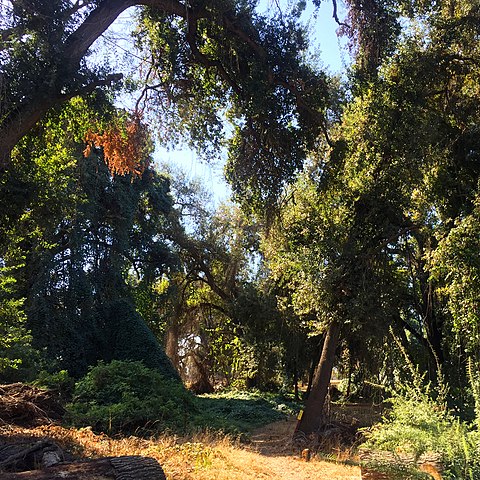
Adam Livingston is the Director of Planning and Policy at the Sequoia Riverlands Trust (SRT). SRT is part of the Groundwater Collaborative, a group of non-governmental organizations, tribes and individuals that share information and resources to aid NGO participation in the development and implementation of groundwater sustainability plans around the state. Clean Water Action's Communication's Manager, Nina Foushee, interviewed Adam about the role of land trusts in sustainable groundwater management.
For the layperson, how would you describe the reasons a land trust would get involved in sustainable groundwater management/ the intersection of what people think of as land conservation and doing sustainable groundwater work?
Sequoia Riverlands Trust (SRT) is a regional, accredited land trust that inspires love and lasting protection for important lands. Our region -- the Southern Sierra and Southern San Joaquin Valley – has habitat corridors critical to climate adaptation, some of the most productive agricultural land on the planet, and a diverse and rapidly growing human population. But natural and working lands depend on water, as do cities. Decisions about groundwater management will affect how and where our communities grow for decades to come. So we have a strong interest in making sure groundwater is used sustainably and finding solutions that work for everyone.
What are your main aims as a land trust?
From the iconic landscapes of the Southern Sierra to farms and ranches that produce much of our state’s food, SRT is dedicated to conserving our region’s important lands for future generations. Bringing our region’s groundwater use in line with sustainable supplies is likely to involve significant changes in land use, however, with recent estimates indicating that 500,000 acres of irrigated cropland could be taken out of production.
We believe that any farmland retirement that happens should be conducted in a coordinated way. Instead of fallowing small, disconnected parcels throughout the region—an approach that provides few benefits other than saving water—farmland retirement should be focused in geographically contiguous blocks that can contribute to landscape-scale conservation. Restoring this land and linking it to existing habitat could expand wildlife corridors on the Valley floor, while providing benefits ranging from carbon sequestration and groundwater recharge to improved air quality and outdoor recreation opportunities.
What do you think would happen if NGO’s like yours were not involved?
There would likely be less emphasis on conservation, public health and environmental justice, and less of an impetus to be sure farmland retirement is conducted in a way that benefits the region as a whole.
What has been your experience of the Groundwater Sustainability Plan (GSP) process and what challenges are you currently facing with that process?
SRT is participating in five Groundwater Sustainability Agencies (GSAs) in a stakeholder or advisory capacity, and is currently providing input on their draft GSPs. At the same time, we are helping to lead the regional dialogue about farmland retirement. From the beginning, a major challenge has been the sheer number of GSAs. The San Joaquin Valley has dozens, and no one organization has the capacity to participate in all of them.
Why is community involvement in groundwater sustainability important in your basin/region?
SRT works with multiple GSAs in a stakeholder or advisory capacity, and we encourage public engagement. Our region’s economy, environment and quality of life all depend on a sustainable water supply, and the decisions made by GSAs this winter will affect all of us.
Why should an everyday Californian care about sustainable groundwater management and how do you make the connection between groundwater and other issues that are really important to people?
Cities, farms and habitat all need water. But in recent decades, our region has become increasingly dependent on unsustainable levels of groundwater consumption. This pattern accelerated during the drought, with results ranging from land subsidence to wells going dry in some of our region’s most vulnerable communities. I don’t think there’s any way to avoid addressing the problem—the challenge is to find a solution that benefits everyone, and contributes to our region’s economy, environment and quality of life in the long term.


